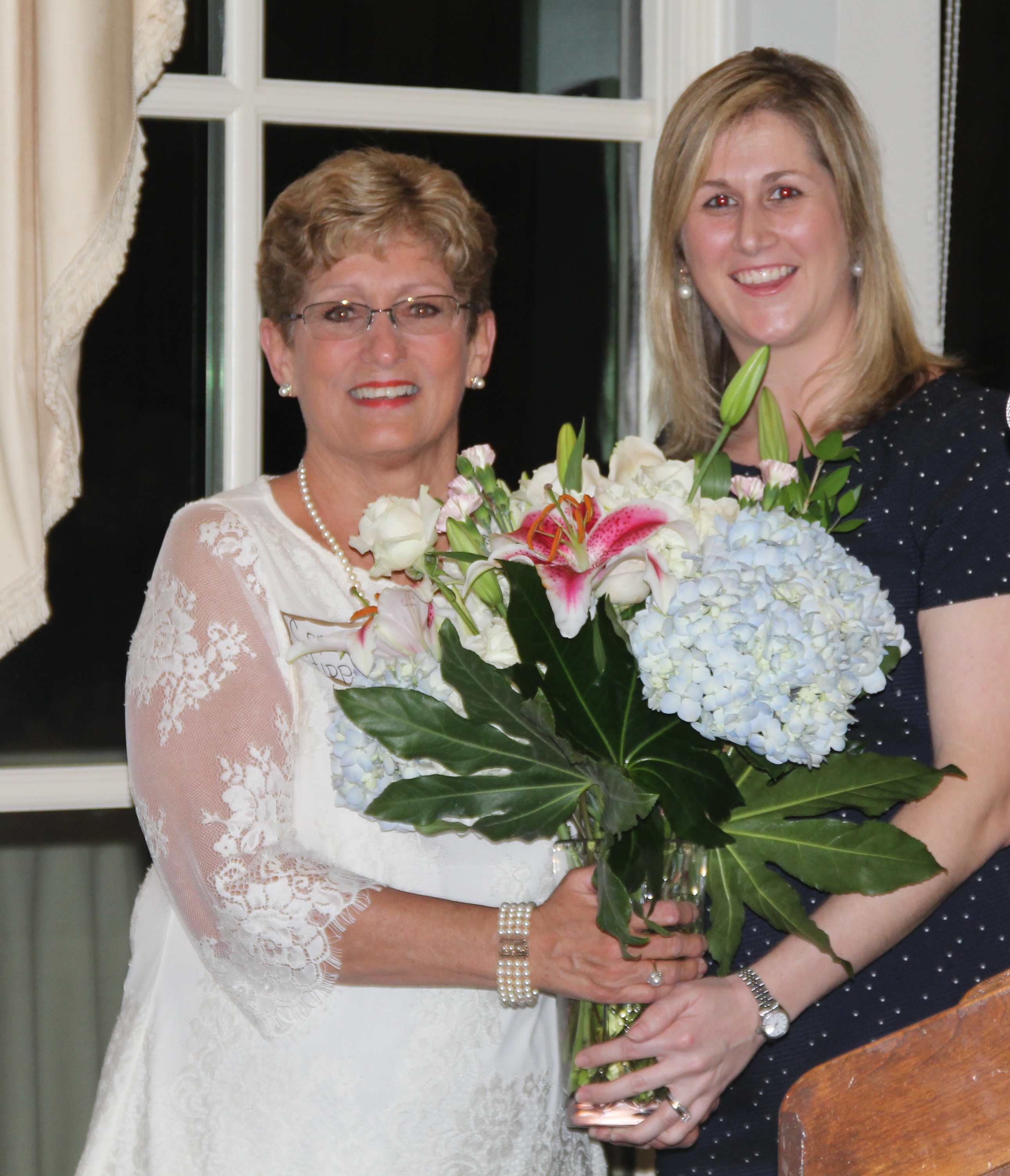Maggie Schein and Jonathan Hannah A Pair… Author and Artist
story by mary ellen thompson
photography by john wollwerth
There are just some people out there who defy description. You may be acquainted with them, if you are so fortunate; they may be your neighbors, or people with whom you chatted at an event, they may even be your friends. They are the people that, if you know them on the surface, are inevitably lovely and kind and do good things for others. If you are able to peek behind the curtain, you will be awed and dazzled by their intellect, their creativity, and their dedication. Maggie Schein and Jonathan Hannah are two such people; and how delightful, and inevitable, that they come as a pair. Author and artist: Maggie wrote Lost Cantos of the Ouroboros Caves, and Jonathan brought the stories to life with his striking and intuitive illustrations.
When you have a chat with this nice couple who, you find, rescue all sorts of injured animals, and discover that Maggie spent many years as a ballerina and is a philosopher and ethicist with a PhD from the University of Chicago Committee on Social Thought, you might wonder if you should be a bit intimidated. Worry not. Maggie’s words will woo you, no matter the subject. If you are intrigued by Jonathan, and you will be, look at his art for clues into his character. Immediately evident, they are his precision, his musicality, his spirituality, and his athleticism. Look further, and you will be transported to a deeper realm.
Maggie’s love of language was most certainly fostered by Pat Conroy, who was her dear friend and guide through the world of words. Upon his passing, Maggie wrote, “May your toes skim the waterway on your ascent like a heron taking off, and disrupt the current just enough to make the dolphins curious and dance as you fly across to the other side, surrounded by all the love you have generated, and lit by the crimson setting and dawning suns of the low country, Pat. Pat Conroy’s physical body is now at rest. His love, his life, and his work can now expand beyond what any singular body can hold.”
Jonathan thought to capture the last essence of Pat’s physical presence in a photograph he took of Pat’s study, as he had recently left it with his chair angled just so from his desk and his pen and glasses atop the journal in which he had been writing.
Pat had been present the night of Maggie’s birth as the best friend of her parents, Bernie and Martha Schein. Pat wrote the foreward to Lost Cantos of the Ouroboros Caves, and in the hardback edition there is the last recording of him reading his own writing, along with Janis Ian’s audio of the stories, tucked into the front and back covers.
When asked about the inspiration for this collection of her stories Maggie responded, “I read stories and philosophy because I have questions. I think both stories and philosophy address the greatest questions there are about love, life, birth, death, and what may or may not happen in between. My intention in writing my stories is to create an experience of those questions; I’m sharing my experience of them and hopefully galvanizing my readers to ask their own questions. I left philosophy because there is a tendency to want to find answers.” Maggie’s stories don’t provide answers; instead, they create pathways along which her readers can meander as they investigate their own questions and search for their own solutions.
Although she will occasionally refer to them as fables while searching for a word that will better define them, it’s no wonder there isn’t a proper name – they defy ordinary description. These are stories, fables and songs, woven into their own unique genre. Each of them is told in a way that can evoke your rawest emotion in a single phrase, sing the sweetest songs to your memories, and tell truths so evident that they have become lost in the mist. There is the influence of Pat Conroy in Maggie’s lush use of language, but you will also feel the embrace of Antoine de Saint-Exupéry, and Kahlil Gibran, weaving in and out of the collection.
Did the stories come to her, in dreams or visions, in parts or as a whole? Maggie replies, “The stories come in dreams, and in visions, and not necessarily in sequence. Sometimes the middle comes first, sometimes the end; sometimes they come in dreams and are complete and I then have to unravel them. Other times they come from one word, one moment, one feeling, or one freak accident, and the trick is to give that a home.”
Phrases from the book read like this: “That is what love feels like to a child. They lick it from the smile-creased eyes like honeysuckle dew.” Or, “…when the moon discreetly unveils one sliver of her bright shoulder, and if one presses one’s eyes closed at the crest of the cricket’s symphony.”
Did those words come to her just that way, or does she write and rewrite? Maggie answers, “The first one was written just that way; in the second, one word was changed. I pay as much attention to each word as I do to the whole story. Individual words can tell you everything you need to know about a scene.”
Jonathan agrees, “It’s zen-like, finding the right word. For instance, vanilla versus white; vanilla adds flavor, texture, depth.” And how right he is, “white” can be cold, stark, blank, but when you hear “vanilla” there is immediately a scent and taste already attached.
The illustrations were created under the gun, so to speak. Jonathan elucidates that Maggie asked him to create all eleven of them in only one month. They were to have no faces, except for one, and they needed to be in black and white, with the cover also in color. And, Maggie had to have final approval. The simple explanation of how Jonathan was able to do this is that he built them in a 3D modeler. For those of us who have no idea what that means, he basically created an entire world inside a computer.
It probably came in handy that he is an artist, graphic designer, and builds web sites, among his many other talents. For instance re: the other talents, “I studied traditional Tibetan art, not only because of the beauty, but also because of the sacred geometry. Afterwards, I mixed the formal technique with the visions I had in my meditations.
“I did art as soon as I popped out,” Jonathan says with a smile in his eyes. “I won awards in high school and planned to go to art school but wound up as a theology major. That lasted one year. I heard a female pianist play Variations on a Theme, composed by Brahms, and I switched my major to music. I received a BA in composition and theory. For awhile, I had a business doing production, composing, arranging and marketing music for films which included a music library where people could purchase music for licensing. One of the things that I am now looking forward to is having time for creating ambient soundscapes for meditation.”
Although their lives nearly intersected at different points both in New York and Connecticut, Maggie and Jonathan eventually met in a dojo, which is a training hall for martial arts, in Chicago. Here is the dialogue they have about that day.
Maggie: “I couldn’t dance any more, and I didn’t want to kill anyone, but I was really small, and single, and I wanted to have enough skill to protect myself. I met some people who trained and I went with them to learn karate.”
Jonathan: “I was the lead teacher there when she went.”
Maggie: “When I went to that studio, Jonathan was the bad ass teacher.”
Jonathan: “She thought she was the badass; which was why she came to that class.”
Maggie: “Being a dancer, I like to kick. I’m strong and accurate and go right to the head. I tried to kick him in the head and he executed a spinning hook kick and his heel landed in the back of my head; then I saw three of him.”
Jonathan has long been a student and teacher of martial arts; he recounts, “I started my training in Chinese martial arts when I was growing up in Connecticut. I moved to Manhattan and started studying Seido karate, which is a traditional Japanese karate. Then I went to Chicago where I continued studying and learned a more medicinal form of tai chi from a woman named How Come, she was teaching it to patients in a hospital. Now that is what I teach; my students range in age from 40 to 70. I just started studying Brazilian jiu jitsu at the Stillness gym here. In martial arts, it’s all about the teacher for me and my teacher, Cesar, is exceptionally perceptive, intuitive and skilled.”
What this imaginative and diverse couple are working on now is this: “We are putting our heads and diverse skills sets together again, both in the creation of a second collection of fables and illustrations, and also, more importantly, in the creation of a unique system for connecting readers with the stories they need, and publishers and distributers with their audiences. The system will be holistic, and a sophisticated approach to the complications and opportunities of our rapidly changing digitalized age, with utmost reverence for the always important need and desire to read the right words at the right time. The new venture is, at present, in development, and is called The Literary Apothecary.” Although the literaryapothecary.com website is currently under construction, I suggest that everyone pay attention and check back. Come out for Maggie’s book readings, you will be delighted and entranced.


